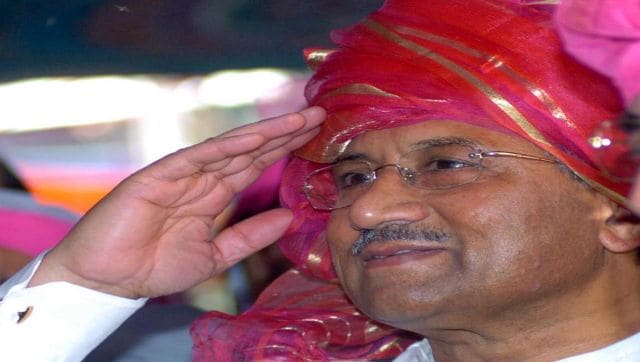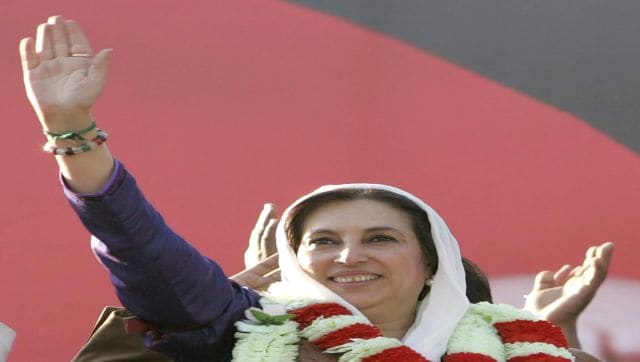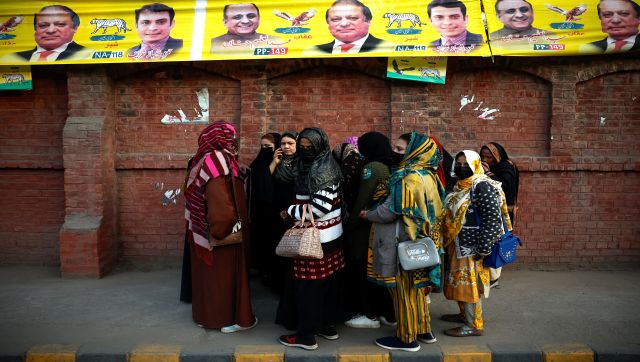Today is a big day in Pakistan. The country is holding its 12th general election and it promises to be a day of high political drama. A total of 5,128 candidates will contest the polls to form a new National Assembly. Of these, about 4,800 are males, 312 are females, and two are transgender people. The National Assembly consists of 336 seats, and 266 are decided through direct voting on polling day. As people gear up to choose their next government — a choice mostly restricted between Nawaz Sharif’s Pakistan Muslim League (N) (PLM-N) and Bilawal Bhutto Zardari’s Pakistan People’s Party (PPP) with Imran Khan’s Pakistan Tehreek-e-Insaf (PTI) also in the mix — a fear of the elections being ‘rigged’ are looming large. In fact, a survey carried out just days before the polls revealed that more than two-thirds of Pakistan citizens lack faith in the integrity of their electoral process. As Niaz Murtaza, an economist and Pakistan political watcher, wrote for the Daily Star, “The 1970s elections were its freest ones in terms of pre-election and election-day processes. However, their legitimacy was lost when power was not handed over to Awami League. Since then, the parliamentary system has become entrenched and 10 more parliamentary elections have been held until 2018. But almost all of them were rigged to some extent.” We take a closer look at how India’s neighbour, Pakistan, has voted in the past and how they have been manipulated by the powers to-be — namely the all-powerful
Pakistan military . Catch all the LIVE updates from the Pakistan election
HERE The 2018 election Ask the people of Pakistan if the 2018 election was fair and the resounding answer would be no. A report by the Dawn said that most political analysts called the 2018 election the most unfair, barring this time’s polls. At the time, three-time Prime Minister Nawaz Sharif was perhaps the most popular politician in the country. However, before the polls could be conducted, he was disqualified from holding a public office by the Supreme Court on corruption charges. And that’s not all. Many of his party’s candidates quit the party and joined the rival group of
Imran Khan , many at the behest of the Establishment. Many media outlets were also heavily censored before the polls — as a means to silence any criticism. [caption id=“attachment_13702932” align=“alignnone” width=“640”] The Imran Khan-led PTI came to power in 2018, breaking the duopoly of the PML-N and the PPP. Many believed that Khan’s win at the polls were facilitated with the support of the Pakistan military. File image/AP[/caption] After the polls were conducted, the outgoing PML-N and other parties complained that the vote was far from free and fair. They alleged that their representatives were not allowed to witness the counting process, as mandated by law, and that the final counts were not properly documented. FAFEN, an independent Pakistani election observer network, noted in at least 35 constituencies, the winning margin was less than the number of votes rejected by electoral officials, often a red flag for possible manipulation. The number was similar in 2013. However, the Election Commission of Pakistan denied the claim and asked for substantial evidence. At the end of it all, the Imran Khan-led PTI came to power, breaking the duopoly of the PML-N and the PPP, along with the support of regional parties such as MQM-P and PML-Q. As Tahir Mehdi, a Pakistan poll watcher, told the Dawn, “A lot of work was put in before the elections in terms of what candidates to field, what alliances to create. It was the birth of a totally new type of rigging, whose slightly more advanced form we’re going to see in 2024.” The 2002 polls Many analysts observe that the 2002 polls in Pakistan was when the Pakistan military’s presence was truly felt during elections. A year after General Pervez Musharraf declared himself president of Pakistan, he called for elections in the year of 2002. To maintain his grip on power, Musharraf established another faction of Pakistan Muslim League, known as PML-Q. Interestingly, the birth of PML-Q came less than three months before the polling day. However, its leaders were mostly poached from the other parties. [caption id=“attachment_13702952” align=“alignnone” width=“640”]
 General Pervez Musharraf won the 2002 polls, in what is now called ‘The General’s Election’. Many called it one of the most rigged elections in Pakistan. File image/PTI[/caption] The leadership of the two mainstream parties, the PML-N and the PPP, were exiled and several other restrictions were also imposed on the parties. One such restriction was the Political Parties Order, 2002, which mandated that the head of a contesting party must be present in Pakistan and they must not be convicted. And when the results were announced, it came as no surprise. The Musharraf-led PML-Q won the highest number of seats in the National Assembly, while the PPP came in at second position. Dawn News journalist Zarrar Khuhro had then said: “There are general elections, and then there are the General’s elections, and this was the latter. The 2002 elections were unbelievably rigged. Every single administrative department from the police to the returning officers to the people who counted the votes — they were all on that side (the state).” The 1997 elections The 1997 elections saw Pakistan voters rejecting Benazir Bhutto’s PPP and opting for the PML-N, led by Nawaz Sharif. What was most surprising of these polls was the margin by which PML-N won. Sharif secured a landslide victory, winning 137 of the total 217 National Assembly seats, almost doubling his haul of 73 seats in the previous elections. And Bhutto’s electoral haul shrank drastically. [caption id=“attachment_13702972” align=“alignnone” width=“640”]
General Pervez Musharraf won the 2002 polls, in what is now called ‘The General’s Election’. Many called it one of the most rigged elections in Pakistan. File image/PTI[/caption] The leadership of the two mainstream parties, the PML-N and the PPP, were exiled and several other restrictions were also imposed on the parties. One such restriction was the Political Parties Order, 2002, which mandated that the head of a contesting party must be present in Pakistan and they must not be convicted. And when the results were announced, it came as no surprise. The Musharraf-led PML-Q won the highest number of seats in the National Assembly, while the PPP came in at second position. Dawn News journalist Zarrar Khuhro had then said: “There are general elections, and then there are the General’s elections, and this was the latter. The 2002 elections were unbelievably rigged. Every single administrative department from the police to the returning officers to the people who counted the votes — they were all on that side (the state).” The 1997 elections The 1997 elections saw Pakistan voters rejecting Benazir Bhutto’s PPP and opting for the PML-N, led by Nawaz Sharif. What was most surprising of these polls was the margin by which PML-N won. Sharif secured a landslide victory, winning 137 of the total 217 National Assembly seats, almost doubling his haul of 73 seats in the previous elections. And Bhutto’s electoral haul shrank drastically. [caption id=“attachment_13702972” align=“alignnone” width=“640”] The Benazir Bhutto-led PPP suffered a massive loss in 1997. File image/AP[/caption] Analysts believe that Bhutto’s poor performance in the polls could be attributed to the killing of Benazir’s brother Murtaza Bhutto and the allegations of corruption against her husband Asif Ali Zardari. However, that wasn’t the end of it. Bhutto failed miserably in the elections owing to the fact that many loyalists and leaders had been arrested. Several noted that the competition was “controlled”.
**Also read: How the electoral system works in Pakistan** Election of 1990 In the August of 1990, President Ghulam Ishaq Khan dissolved the National Assembly and dismissed the Benazir Bhutto government on charges of corruption and maladministration. This set the tone for the election that was held in October of the same year. This time facing the PPP in the polls was the Islami Jamhoori Ittehad (IJI). When the last vote was counted, the PPP lost to the IJI, in a result that surprised many. [caption id=“attachment_13703052” align=“alignnone” width=“640”]
The Benazir Bhutto-led PPP suffered a massive loss in 1997. File image/AP[/caption] Analysts believe that Bhutto’s poor performance in the polls could be attributed to the killing of Benazir’s brother Murtaza Bhutto and the allegations of corruption against her husband Asif Ali Zardari. However, that wasn’t the end of it. Bhutto failed miserably in the elections owing to the fact that many loyalists and leaders had been arrested. Several noted that the competition was “controlled”.
**Also read: How the electoral system works in Pakistan** Election of 1990 In the August of 1990, President Ghulam Ishaq Khan dissolved the National Assembly and dismissed the Benazir Bhutto government on charges of corruption and maladministration. This set the tone for the election that was held in October of the same year. This time facing the PPP in the polls was the Islami Jamhoori Ittehad (IJI). When the last vote was counted, the PPP lost to the IJI, in a result that surprised many. [caption id=“attachment_13703052” align=“alignnone” width=“640”] In 2012, the Supreme Court held that the 1990 election of Pakistan was rigged. The court further stated that then President Ghulam Ishaq Khan, the Chief of Army Staff General Aslam Baig (pictured) and the ISI’s DG Asad Durrani had conspired against the PPP government. File image/Reuters[/caption] It was in 2012 that the Supreme Court of Pakistan ruled that there was enough evidence proving that the 1990 elections were indeed rigged. It further stated that then President Ghulam Ishaq Khan, the Chief of Army Staff General (R) Aslam Baig and the ISI’s DG Asad Durrani had conspired against the PPP government. Further, Durrani revealed in court that he was ordered by then army chief Mirza Aslam Baig to distribute millions of dollars to politicians and parties to help defeat the PPP government of Benazir Bhutto. Cyril Almeida, a Pakistani newspaper columnist, then had said, “We are now seeing things that were once only whispered in Pakistan screamed through the electronic media.”
**Also read: How dynasties dominates Pakistan politics** Pakistan polls of 1985 In 1977, General Zia-ul-Haq dismissed Zulfiqar Ali Bhutto’s government, imposed martial law, and seized power, pledging to conduct elections within 90 days and transfer power to the elected government. He extended that 90-day promise to eight years and called for an election in February 1985. However, in the elections no political parties were permitted to participate. Every candidate contested in his or her individual name. It is said that the general thought that this would help him build a popular support base and it would be easier to control parliament. [caption id=“attachment_13703032” align=“alignnone” width=“640”]
Followers of late Pakistan military ruler General Mohammad Zia-ul-Haq carry his pictures as they assemble at his grave in Islamabad. In 1985, he did the unthinkable: he ordered for elections but without any parties. File image/Reuters[/caption] The First 10 General Elections of Pakistan, a research paper by Dr Hasan-Askari Rizvi and Ijaz Shafi Gilani, and published by Pakistan Institute of Legislative Development and Transparency (PILDAT) said “this process gave birth to a Muslim League which subsequently became a key player in politics. It was birthed under military oversight, but assumed a character of its own over the period of its adulthood… Since 1985 Pakistan’s political scene thrived because the PPP and Pakistan Muslim League were able to accommodate large sections of Pakistani voters under their banners.” The paper further stated that the Pakistani military realised that it didn’t need to execute a coup every time to control politics in the country. “It seems that they came to the conclusion that ‘oversight’ is better than overlordship.” Mazhar Abbas, a veteran journalist, speaking to Dawn said that the 1985 elections were not only rigged, but also damaged the fabric of the country’s society. “Non-party-based elections in itself is a form of pre-poll rigging,” he said. “That approach divided the society into feudals, caste system, etc.” With inputs from agencies
Pakistan is voting today (8 February) in its 12th general election amid claims of it being rigged and unfair. However, such allegations aren’t new. The country has seen a long history of polls being manipulated in favour of one candidate over the other
Advertisement
End of Article


)

)
)
)
)
)
)
)
)



